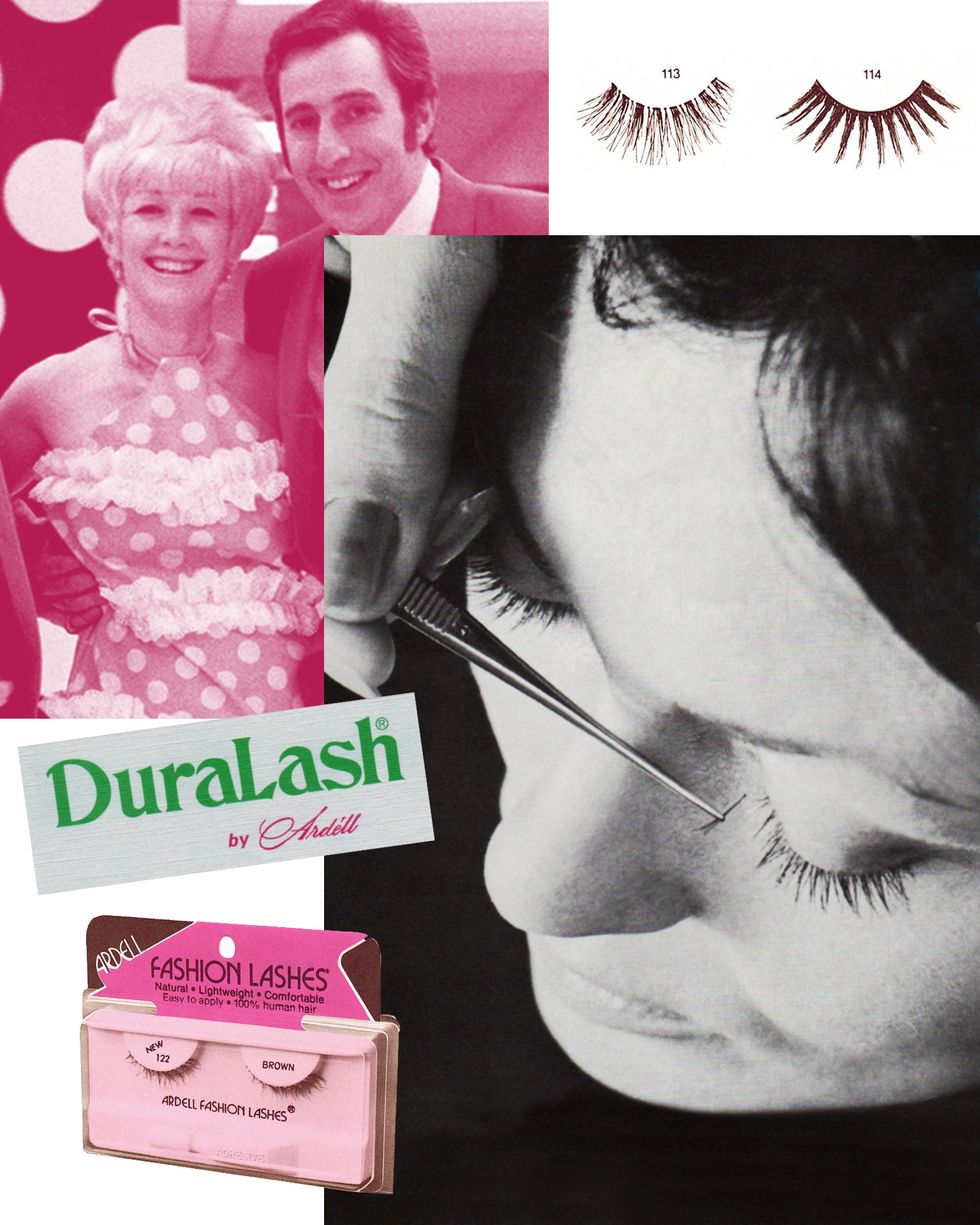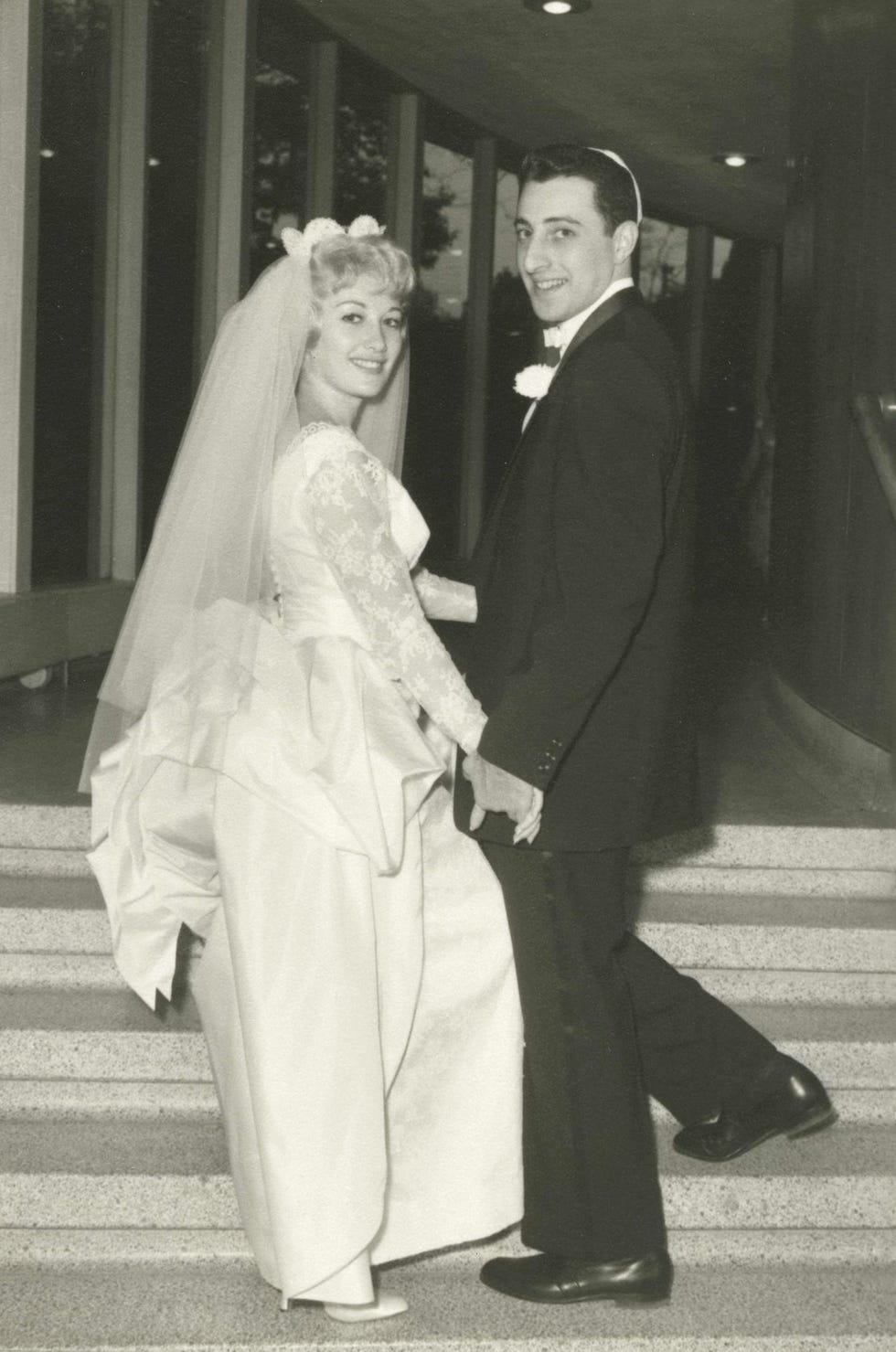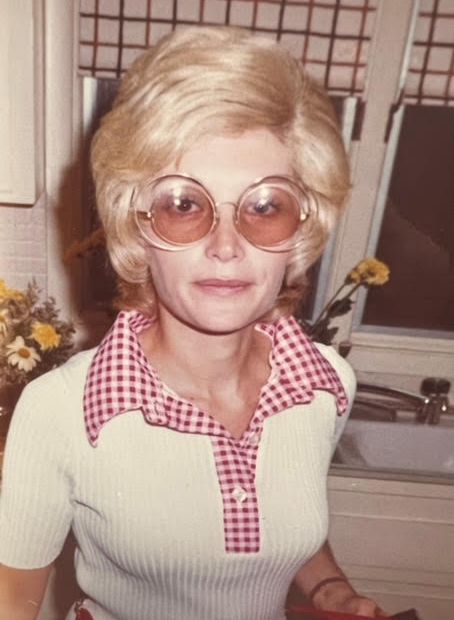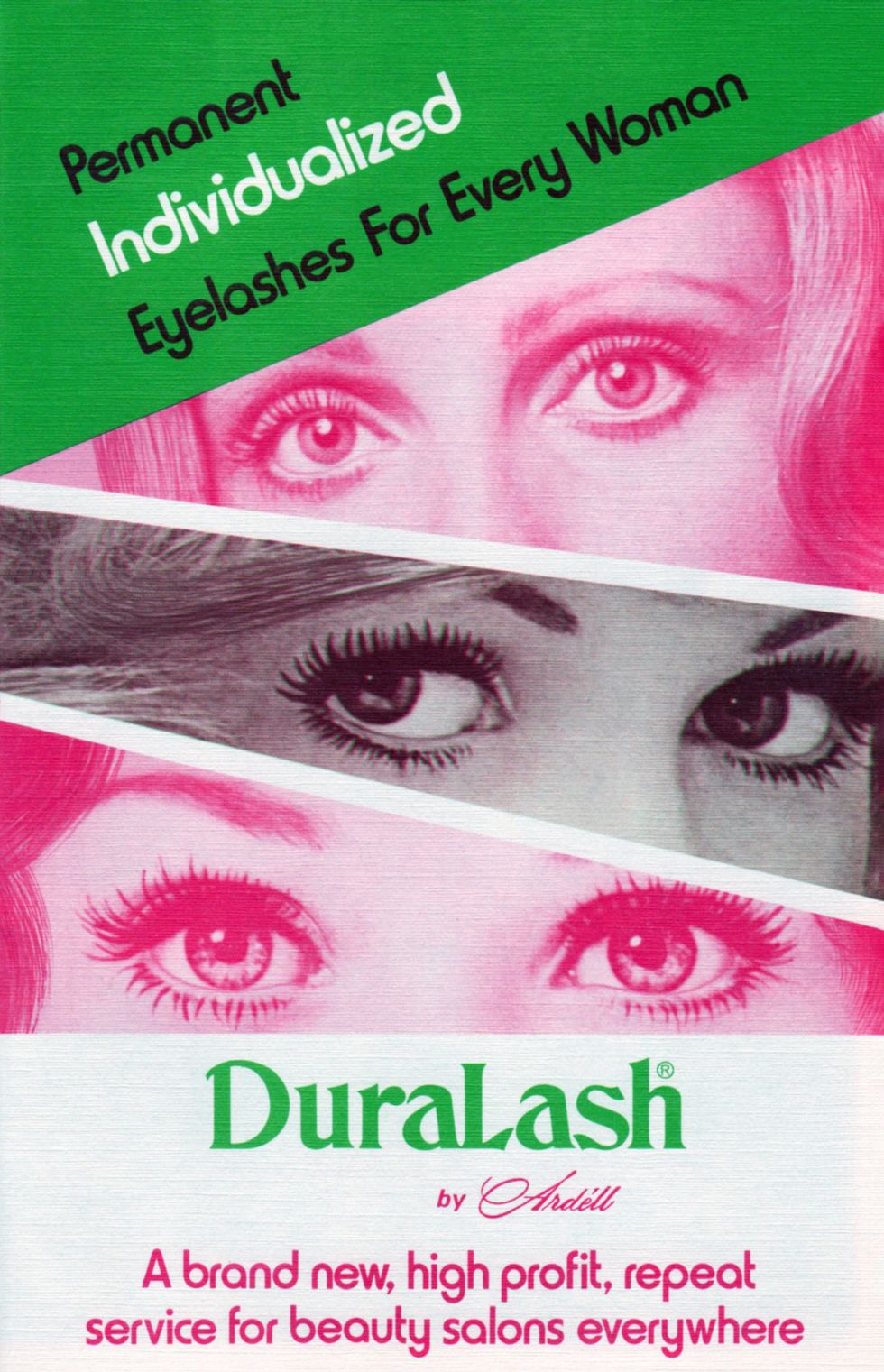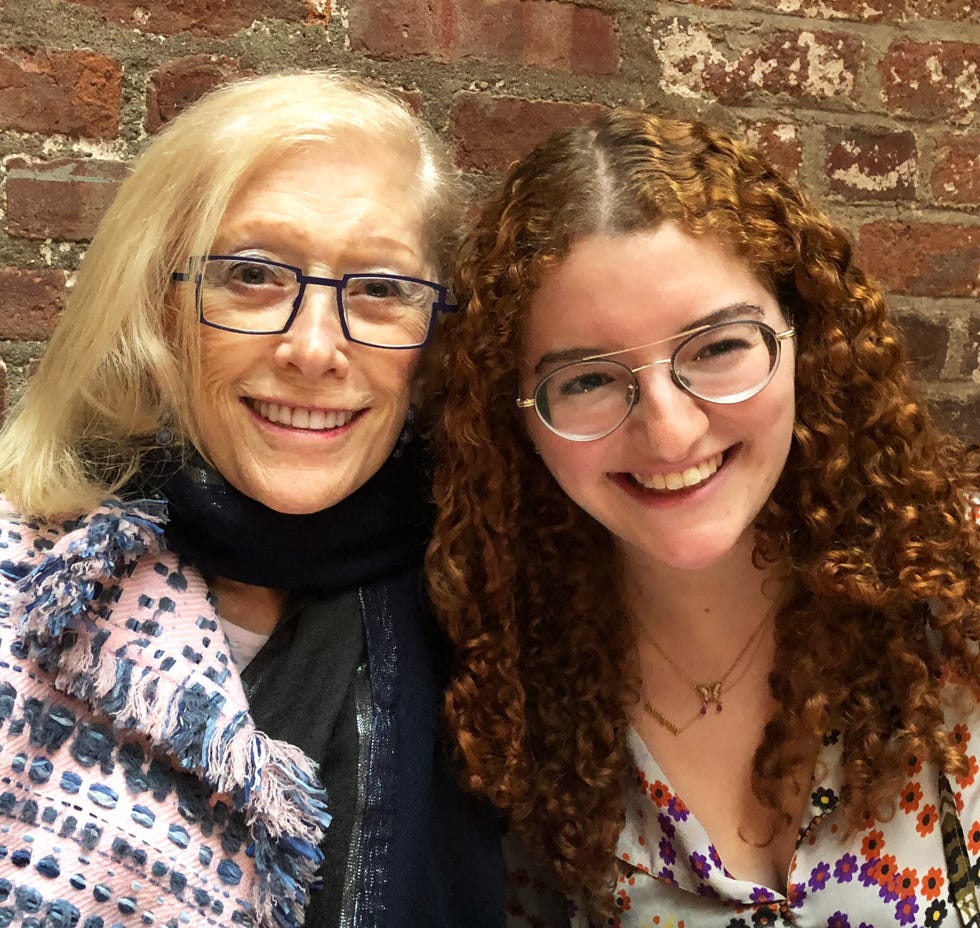I vividly recall being 16 years old and accompanying my grandmother to the Sephora in New York City’s Times Square. She methodically walked every aisle, picking up any product that caught her eye—fascinated by the packaging and the formulas and the color offerings, as joyful as a kid in a candy store.
Her name is Sydell Miller, and she also happens to be the pioneering entrepreneur and bold businesswomen behind the beauty brands Ardell and Matrix, both of whom are responsible for revolutionizing the way women accessed self-care through image-making, reaching back to the 1960s.
These days, she’s in her mid-80s, and still keeps her hair platinum blonde, having merely swapped her heels for sparkle-covered sneakers. And while her reputation is far-reaching and her successes plentiful, Ardell is finding its voice with a new generation.
“My husband thought I would be a housewife,” my grandmother tells me with a laugh. It was 1960, she was two-years married, not yet mothering, and looking for something to do. Her husband, my late grandfather, Arnold Miller, was a hairdresser and a salon owner. After some light prodding, he agreed to let her open and run a womenswear boutique in the retail space above the salon—fitting first business venture for a woman with a lifelong infatuation with fashion. Yet, her career pursuits weren’t fully satiated within the square footage of her store.
Their attention was piqued by a persistent issue with one of the salon’s signature services—eyelash “tipping,” similar to contemporary eyelash extensions. “It took two and a half hours, and we lost money on every one we did,” she says, lamenting the arduous process of applying individual hairs one by one in multiple layers that had to then be customized and feathered.
“We just knew there had to be a better way.” With that driving idea, the couple developed Duralash, the world’s first pre-cut eyelash kit that could be distributed to salons and applied at a fraction of the time and cost.
They debuted the product at a Chicago-area trade show in 1970; my grandmother learned how to apply the lashes and headed out on the road with her husband as newly-minted co-founders. After applying hundreds of pairs on the show’s first day with minimal sales (naturally, prospective customers wanted to see how the product performed through sleep and showers), the duo arrived the next morning to a line wrapping around their booth and sold out within the hour.
At that point, the budding company—still headquartered out of the basement of the family’s suburban home—needed a moniker. They settled on combining the letters from both their first names, and Arnie and Sydell became Ardell.
It was a true family affair. My great-uncle, Dennis Lubin, designed the Ardell logo and branding, which the company still uses today. My mother and aunt recall watching their parents come home from their day jobs and stay up nights building the business—from strategizing to packing shipments. The family would travel together on weekends for trade shows.
“My friends would come for sleepovers and wonder what my mother was doing up at midnight,” says my mom, Stacie Halpern. “She was sitting at the kitchen table, doing inventory by hand before there were computers,” she laughs. “She was the one crossing the t’s and dotting the i’s for all of dad’s big dreams, making it happen.”
It was the ’70s, and the second-wave feminist movement was taking off. The Mary Tyler Moore Show was a hit and Gloria Steinem’s Ms. Magazine was widely circulated. But the growing traction of women in the workforce hadn’t quite reached the ranks of middle-class mothers yet. “She wasn’t the mom that ran the school bake sale, which was unusual,” recalls my mom. “She couldn’t do everything, but my parents made sure to be home when I took my prom photos. Or, when I broke my arm across the country in college, they were there the next day.”
My mom remembers her mother being stopped by others for career advice wherever they went, always quick to offer wisdom—and taking the time to train others along the way. She encouraged dozens of their distributors’ wives to become involved in business, and traveled around the country introducing salons to the woman-centric concept of the day spa. “Women just need more opportunities to become involved,” my grandmother says.
By the late ’70s, Ardell was booming. The company’s Invisibands, the first-of-their-kind banded eyelash strips, made false lashes accessible to the mass market like never before, with unprecedented ease and affordability. They soon expanded into other product categories, debuting Hennalucent, a beloved all-natural, semi-permanent hair color treatment, to great acclaim, and had future visions of cosmetics, skin care, and more.
While my grandfather was forever a hairdresser at heart, my grandmother has always believed in a “beauty doesn’t stop at the hairline” philosophy, prioritizing an integrative and holistic view of style and self-expression. “People are different,” she says. “They dress differently, wear their hair differently, their makeup…it all goes hand in hand. And, it’s what makes people so interesting and exciting to me. It’s all about showing your inner self to the outside world.”
My grandmother has long understood the power of harnessing adornment in the project of self-making, a notion that feels more urgent now than ever. Her contributions to her own partnership and to the beauty industry at large reflect this total-image ideology. “The object is just to feel good,” she asserts.
In 1980, the couple formed Matrix (keeping Ardell’s eyelash business separate), and launched with a line of essential, salon-quality hair care products that went on to become one of the world’s leading beauty brands.
While Ardell’s success helped get Matrix off the ground, by 1983, it became clear they couldn’t continue dividing their focus. The Millers sold Ardell to American International Industries’ Zvi Ryzman, a fellow Jewish entrepreneur who still owns the company today. While Matrix became my grandparents’ defining achievement, Ardell was their first baby, and Ryzman promised to care for it well, steadily growing the brand while retaining its original ethic.
Today, Ardell is the number one lash brand on the market, more relevant than ever with over a million Instagram followers and frequently viral TikTok content. My grandfather’s relentless commitment to education and elevating the reputation of the humble beauty industry professional to the level of artist and healer is strung through the brand’s DNA.
A team of ambassadors is responsible for creating engaging content that aids pros and consumers alike with both informative step-by-step guides and glamorous inspiration. “Ardell is a legacy brand, and I wanted to learn from the best,” explains Ardell global beauty ambassador Jade Munson. “I started as an Ardell Educator over ten years ago, and have since traveled the world teaching, inspiring, and empowering makeup artists,” she adds—a sentiment that would undoubtedly make my grandfather’s heart sing.
Meanwhile, Ardell recently launched a first-time collaboration with Sephora (to my grandmother’s delight), fittingly showcasing the brand alongside other luxury beauty mainstays. And a post-pandemic surge of interest in at-home cosmetics treatments continues to reintroduce Ardell’s falsies to an entirely new audience.
“By instilling their own names into the brand name,” says Terri Cooper, Ardell executive vice president, “the founders set a goal of perfection and personal reputation that will be forever intertwined with the Ardell name.”
She adds, “In other words, developing beauty products is personal for the Ardell team. That has been consistent from day one and will be the foundation upon which the brand’s future is built.”
As a fashion and beauty writer myself, the story is personal for me, too. All those years of sitting on the tufted ottoman inside my grandmother’s bathroom, watching her diligently apply her makeup as if it were second nature while I played with her perfumes rubbed off in some way. She’s given me far more than just the collection of heels she no longer wears, but a deep sense of self-knowledge, a highly personal definition of beauty, and a direction that guides my life’s decisions. Now, whenever I pop into the drugstore for tampons or toilet paper, I’m greeted by an Ardell display case and a feeling of overwhelming gratitude for the woman who’s loved me all my life, and who’s story I’m endlessly proud to tell.

